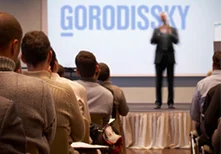General Framework for Comparative Advertising in Russia
20 May 2019Having a developed trademark registration system, accompanied by effective legislative enforcement remedies, Russia represents a large and attractive consumer market for various industries. The exclusive right to a trademark under Russian law expressly names the ability to use a trademark in advertising.
In its turn, the primary advertising legislative act—the Federal law of 13.03.2006 N 38-FZ “On advertising” (the Advertising Law)—sets the general requirements for advertising.
In particular, Subsection 1 Section 2 Article 5 of the Law bans unfair advertising in the form of advertising that contains incorrect comparisons of the advertised product with the goods in commerce produced by other manufacturers or sold by other sellers.
That said, “correct” comparative advertising is in fact allowed under the Russian advertising regime, while “incorrect” comparisons may give rise to liability.
The advertising regulator in Russia is the Federal Anti-Monopoly Services of the Russian Federation (FAS), but courts also consider disputes involving trademark use in advertising.
Legislative and Practical Balance
The Advertising Law does not set boundaries where correctness ends and incorrect advertising starts. In this regard, the Resolution of the Plenum of the Russian Supreme Commercial Court of 08.10.2012 No. 58 provides the milestone guidance on dealing with comparative advertising:
- The advertiser is responsible for ensuring plausibility not only for the information referring to its own activity (goods) featured in the advertising materials, but also for plausibility of the information referring to the competing activity (goods).
- Comparison on the basis of disparate criteria is not allowed.
- Partial comparison is not allowed.
The resolution also highlights that the information in advertising shall also conform to the criteria of plausibility, also for the purpose of forming a true impression of the goods, their quality, and consumer characteristics.
Further, when exploring the notion of incorrect comparison, it is advisable to take account of provisions of unfair competition (Article 14.3 of the Federal law of 26.07.2006 No.135-FZ “On competition protection”), as well as the recommendations of the FAS of 24.12.2015 No. IA/74666/15.
The above provisions and recommendations allow the conclusion that an incorrect comparison takes place when it:
- Is accompanied with use of the words “best”, “first”, “number 1”, “the only”, “the most”, and other words and expressions creating impression of advantages, without providing specific characteristics or criteria of comparison having objective evidence, or the above use with inclusion of words, being false, imprecise, or distorted;
- Lacks indication of specific characteristics or criteria under comparison;
- Does not produce results which can be tested objectively; and
- Is based on solely insignificant or incomparable facts and contain a negative attitude toward the competitor and/or its products.
Liability Risks
The maximum administrative fine for incorrect advertising for a company may reach up to RUR 500,000 (less than US $7,500) under Section 1 Article 14.3 of the Russian Code of Administrative Offences, in the form of an administrative fine. Moreover, the FAS will be entitled to issue an injunction against further airing or promoting the advertising materials held to be in breach of the Advertising Law. Depending on the amount spent on the advertising material at issue, such an injunction may be even more sensitive than the administrative fine. The trademark owner may also consider a trademark infringement dispute (including a claim of compensation) as well as a court case with the claim that the advertising is illegal.
Third-Party Trademarks in Advertising
Cases of comparative advertising involving a third-party trademark are not rare before the FAS and Russian courts.
Among cases in recent years, the Russian manufacturer of kvass—a traditional Russian beverage—used an advertisement that showed a chart of four trademarks, with one trademark owned by the advertiser and three trademarks owned by competitors.
The chart listed the countries of incorporation of the trademark owners: Russia, the United States, Denmark, and the Seychelles. The chart was designed to resemble football team results and was accompanied with the question: “For which team will you vote? Which kvass to buy?”
The Russian subsidiary of the U.S. company, whose trademark was mentioned in the advertising, filed a complaint to the FAS. The complaint was based on the indication that, in reality, the mentioned trademark was registered by a Russian subsidiary of the U.S. company, thereby indicating that the United States was the trademark owner’s country of incorporation was incorrect.
All four brands of kvass mentioned in the advertising were indeed produced in Russia. However, in advertising its own brand, the advertiser highlighted the advantages of its kvass in comparison with the other brands, implying that its competitors manufactured in other countries. The advertising content suggested that the advertised brand, manufactured in Russia, was superior to the three competitors.
In 2015, the FAS considered the complaint and also engaged the expert commission, which unanimously considered the advertising to be in breach of the Advertising Law on the basis of incorrect advertising. An injunction was ordered against further promotion of the advertising.
Another interesting case in which comparative advertising was considered involved Russian subsidiaries of multinational fast-moving consumer goods producers.
The dispute arose out of the use of the slogan “Pure Flavour. No Magic” in the advertising of bouillon cubes. A competing Russian company considered that the word “magic” was similar to its trademark “MAGGI” and filed a lawsuit.
However, in 2012 the courts established that the slogan did not infringe trademark rights because the mere consonance between the word “magic” and the trademark of the plaintiff did not amount to incorrect comparison between two competing products. Expert opinions and social survey reports were also used in this case.
Practical Issues
When evaluating whether comparison is justified and supported with objective evidence on the basis of comparable criteria, it is important to consider every case of advertising on an individual basis.
Specific attention needs to be paid when using results of professional awards and other recognitions as evidence of advantage in comparisons, since not all of them may be considered as objective.
Furthermore, from the trademark owner’s perspective it will be necessary to carefully evaluate whether trademark use was indeed done by the defendant, whether the mere mention of the trademark for informational or comparative purpose was in good faith or bad faith, and whether such mention constituted a trademark infringement.
To access this website, we request that you read and accept the Terms of Use.










